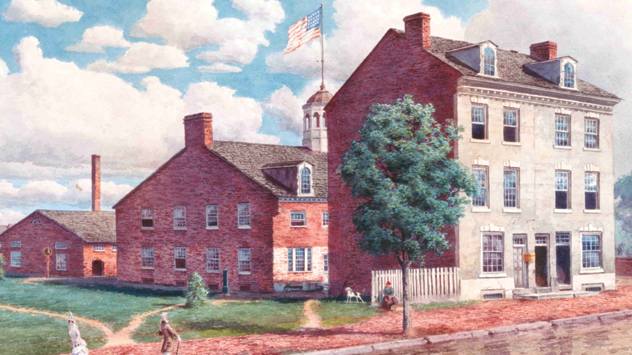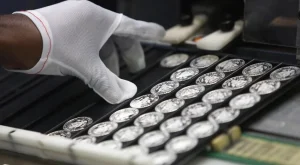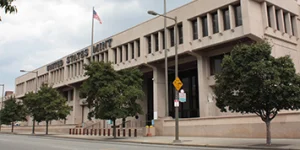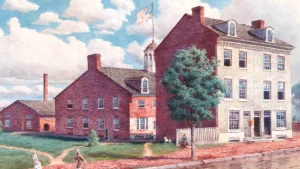On April 2, 1792 Congress passed the Coinage Act, establishing the first national mint in the United States. During the Colonial Period, monetary transactions were handled using foreign or colonial currency, livestock, or produce. After the Revolutionary War, the U.S. was governed by the Articles of Confederation, which authorized states to mint their own coins. In 1788, the Constitution was ratified by a majority of states and discussions soon began about the need for a national mint.
Congress chose Philadelphia, what was then the nation’s capital, as the site of our first Mint. President George Washington appointed a leading scientist, David Rittenhouse, as the first director. Rittenhouse bought two lots at 7th and Arch Streets to build a three-story facility, the
Coin production began immediately. The Act specified the following coinage denominations:
- In copper: half cent and cent
- In silver: half dime, dime, quarter, half dollar, and dollar
- In gold: quarter eagle ($2.50), half eagle ($5), and eagle ($10)
In March 1793, the Mint delivered its first circulating coins: 11,178 copper cents.
In 1795, the Mint became the first federal agency to employ women: Sarah Waldrake and Rachael Summers were hired as adjusters. Learn about their contribution to the Mint’s history and about other trailblazing women at Women at Work.





